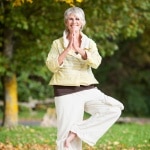Inspired today by an article in the sunday NY Times about psychotherapists branding themselves with websites. This is done by changing the wording, and some of the offerings, about what they do. That is, instead of doing just therapy, consider doing life coaching, which can be done by phone or on line. To find a niche skill or interest and promote yourself as that person who really truly absolutely loves and excels at that particular niche’s issues. Aha! I said, this is a reason to write a blog piece.
In my work with Exercise ETC, as an educator to fellow fitness pros, I often get to go into a spiel on the changing emphases of exercise physiologists, esp the ones with the ACSM who help compile their “Guidelines for Exercise Prescription…” guidebook. Having entered the field in the late 70s I had the chance to see if not the first at least the second edition of these and have vague recollections of their content.
That is, most of the emphasis was on cardiovascular function, in particular max VO2, or max aerobic capacity. Back then ‘aerobics’, started by Ken Cooper in Dallas, was king; everyone should run; if you can’t, at least bike, maybe swim, cross country ski – tough to do in Nashville and most other climes – and perhaps even do some of these new-fangled classes called ‘aerobics’. The idea was to get your heart rate (hr) within a zone whereby you will accrue health benefits and maybe longevity. Little attention – I want to say a matter of a few paragraphs at best – was given to resistance training (rt) or flexiblity; at that time NO attention was given to matters of falling, i.e. balance; and the only functional training, if it could be called that, was cardiac function.
What I get to tell the participants in these classes is that in the 70s, most ex phys guys themselves were runners, and young ones at that; I’d say most were in their late 20s to late 30s. then the 1980s came in and these guys were getting acute and chronic injuries that kept interferin
But the guys got older, and their mothers did, too. So in the 90s we get to hearing something about improving flexibility – and more and better research was coming out, too, some of which went counter to the beliefs of yesteryears – and bone building exercise. Hence the mother role – osteoporosis. Too, balance issues started to come to the surface. Because of old injuries, where running was no longer an option for many, studies had shown that shorter periods of less intense, i.e. walking, worked for the heart and for disease prevention and management, and rt came to have even more cachet in the Guidelines.
Today, functional training is a large piece of the ACSM’s message, where functional training is a more comprehensive program of all aspects of fitness and exercise…and movement. What the next step is, as the old ex phys guys get even older – of which now, I am one – I don’t pretend to know. Here’s why I’m writing all these thoughts down.
In 1986, when my academic colleague and I set out to start a personal training center, STEPS, I was a spry young man tho an older elite martial artist still able to kick, punch, run, jump etc with virtually no impairments and never needing, nor taking, rest time to recover. (oh if only I’d known then what I know now….) most of my early clients were in their 40s, out of shape or with orthopedic or medical conditions, and it was so easy for me to think, and say, that once we got you in shape you’d be a lot better. Truth is, for someone out of shape and in pain, alleviating the former often resolved the latter.
Boy was I wrong to suggest that just being out of shape was their problem. As I aged, I learned that I, too, even in shape, was in more pain and less functionality than before I crossed that age barrier, whatever it was. Now, on the cusp of 60, I know all those old injuries and activities were enough to cause my pains and aches that I have to daily fight to remain functional. I’m one of those younger ex phys guys who’s grown up, grown mature, maybe in some parts of my body even grown old – knees, hip, etc. still healthy, and still lean, I can fool the eye…but not the x-ray machine.
So where does this lead me so far as branding is concerned? Well, as my clients aged, as I’ve aged, I’ve become even more acutely and personally aware of their/my needs to the point where I am now one of the premier trainers to the aging population, esp those with issues. Nashville has a lot of great trainers, and many who work with this population, so I’m not going to say I’m one of the best just because I have a degree and more years under my belt; I will say that I am one of the premier simply because I have had so much experience and have read so much on this, our, population. In that regard, have branded myself as such. As I am the point man for anyone who contacts STEPS, I am the link to a younger trainer and generally an older client, and STEPS if not the actual trainer gets further branding as the place for older clients to get good training. How I write or say this, I don’t know. I do know that this branding, worn on my face, my grayer hair, my limpy knee, and on the very spirit of what I see as the knowledge and atmospheric foundations for working with an aging population is what sets STEPS apart. Our clients don’t wear spandex tights to show off their figures, or torn wife-beaters to bare their muscles; they are mostly normal looking folks, like me, who want to be able to do what it is they want to do with less pain, more vigor, and for a longer period of time on their calendar of life, and if STEPS is the place for them, then I’ve branded myself and STEPS just fine.
Though I would have loved to remain that younger trainer telling the older clients it’s just because you’re not in as good a condition as I’ll make you someday:)















